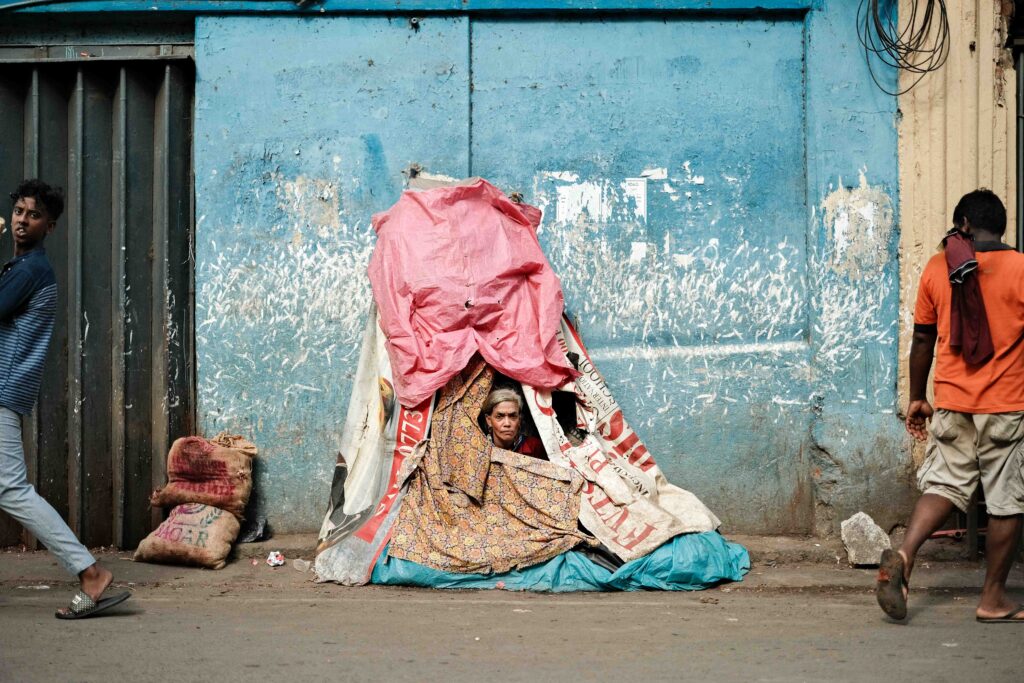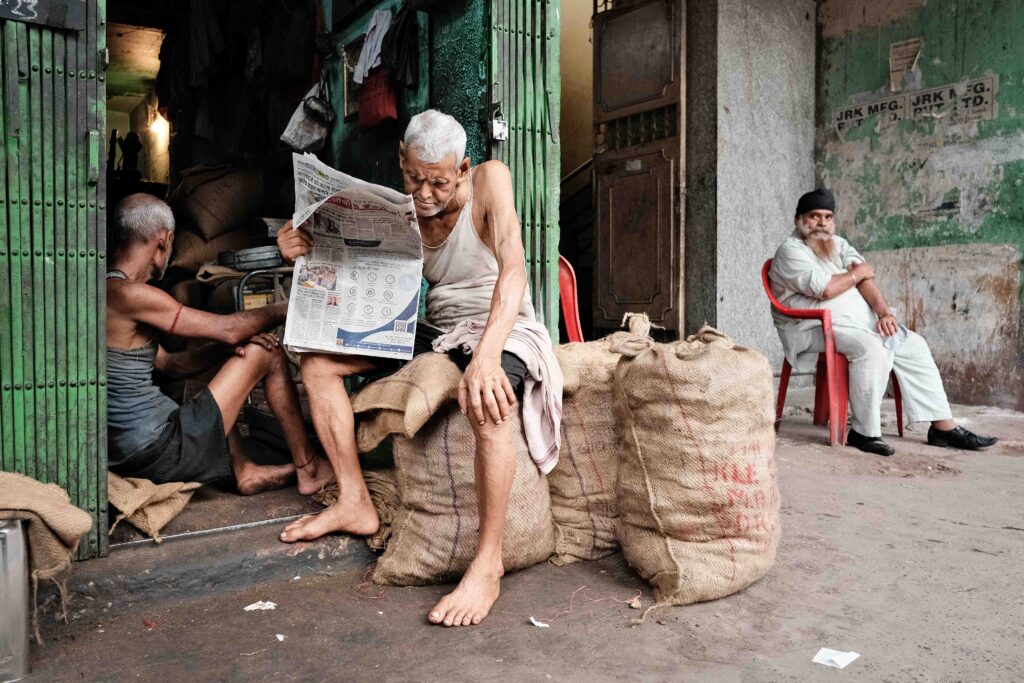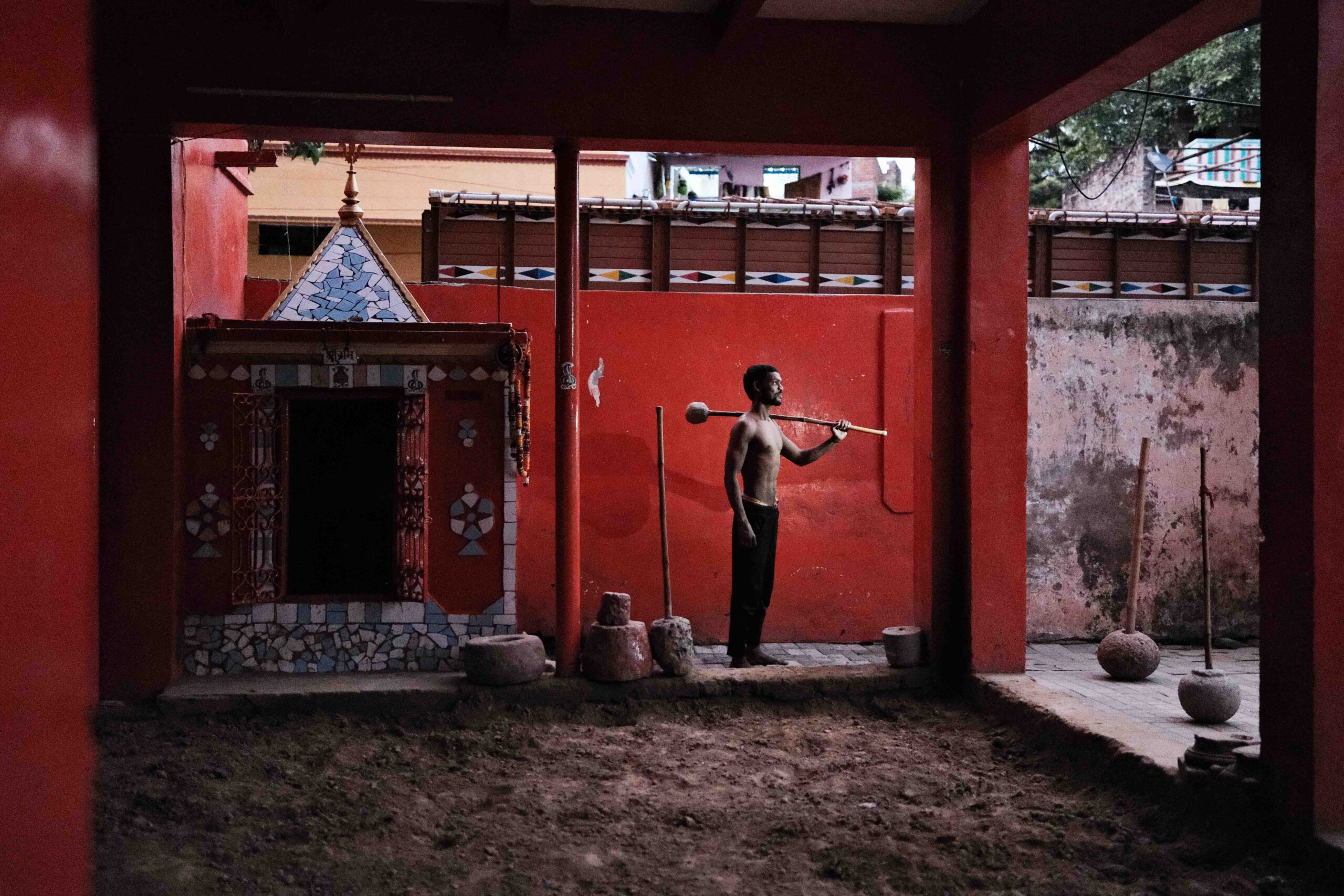Learning how to see is integral to every photographer’s development. Through the training and development of one eye, the details, shapes, stories, lighting and other composites necessary to build compelling imagery can be harnessed. Fortunately, the fundamental elements are straightforward, consisting of only three key points. There are, of course, many things to learn within these. The specifics of each varying depending on the genre of photography in question. However, they remain universally applicable to all. In this article, we will cover how to use this formula when learning How To Shoot Street Photography.

How To Shoot Street Photography: Lighting
First and foremost, before considering anything else, it is essential to find a scene with ideal lighting conditions. Blue skies, overcast days, blue/golden hours, fluorescent lighting, backlight, and directional light will all affect the outcome of an image.
When on a shoot, my eyes constantly scan the environment for the ideal lighting conditions. Because if they don’t exist, there is little point in attempting to make the image. This rule is especially true for days with clear blue skies or during night shoots. In the former, the harsh lines of the shadow cast by the sun will paint shapes across a scene that, when utilized correctly, can enhance images tenfold. In the case of the latter, there will be places lit by cars, shops, street lights, neon lighting, etc., that give the ideal light to make a composition.
Blue/Golden hours are incredibly forgiving times of the day to shoot in, as the soft light makes everything look better. However, the warm glow of these images can sometimes lose the grit of the streets they aim to reflect. These are also the perfect times of the day to backlight your subjects and create images with stunning dynamic range.
Overcast days can work for some situations, the clouds acting as a giant softbox to the sun. For example, it may be an ideal time to focus on street portraits. However, grey skies generate the most uninteresting light, leading to boring flat photographs. Moreover, the haze interferes with the edges of skylines, meaning any wider shots will look terrible.
The more you shoot in each lighting condition, the more you will understand what to look for and how to see in them. It’s also worth researching the styles other artists have achieved in various lighting conditions to see what is achievable.

How To Shoot Street Photography: Storytelling
Once you have assessed the quality of light, it’s time to ask yourself if there is a worthwhile story to document. It may not necessarily be happening there at that instant. Your perceptiveness is required to predict any unfolding narratives. But to increase the strength of your images, there must be some underlined story to it. After all, photography is a form of visual communication. So, there should always be something your images are trying to convey to an audience.
Fortunately, the streets are abundant with unfolding narratives. And after one has trained themselves to notice them, they become spoiled for choice. And remember, the stories don’t need to be deep or meaningful in any way. Most high-calibre street photography is often playful and nonsensical.
When attempting to capture a narrative, it is crucial to be aware of the components in the scene that tell its story. The more of these you can include, the stronger it will be. Let’s take people eating at a hot dog stand as an example. You could shoot several people surrounding a stand and get the message through, but it won’t be a powerful image. Instead, you could look for people eating the dogs, paying for them, using their smartphones to take selfies with them, crying children after dropping them, and greedy seagulls snatching them from people. After understanding what can contribute to a photograph’s narrative, you can aim to include as many enhancing details as possible in the image, which brings us to our final point.

How To Shoot Street Photography: Composition
To make successful compositions, the photographer must be conscious of multiple factors. Firstly, to include as many of these elements as possible, but also to do so in a way that fills the frame in a balanced, well-composed manner. Compositional rules such as negative space, leading lines or the rule of thirds are handy tools to familiarise yourself with here. Furthermore, layering, one of my favourites, will add depth and create more striking imagery. However, one must become comfortable getting close to a subject for the best results. Proximity is a vital component of street photography, so the sooner you learn to live with the discomfort, the better.
When shooting a street scene, I always attempt to predict how a photograph will look from all angles. And, I will get in amongst one and move around to see if I can make something work. Moreover, I will remain conscious of the subjects in the frame, trying to predict the possible outcomes of their actions to stage the decisive moment. It is necessary to move a lot in street photography, meaning it helps to be in good shape. But there are also times you can wait for extended periods for the perfect composition to come together.
But even with all the knowledge and perceptiveness in the world, many great street photographs come down to a combination of being in the right place at the right time and shed loads of luck. Something no amount of training can make happen. That is why the more time spent in the street behind the camera, the greater the likelihood of capturing those decisive moments. They are often examples of when preparation meets opportunity.

Conclusion
Training your eye to see these elements and developing the perceptiveness to bring them together captivatingly will take years of training. And a combination of artist research and practice is necessary for the best results. Understanding what other photographers achieve in the space can help show what’s possible. Some theory work on the three points will also advance your street photography. Unfortunately, this journey will be lengthy and require patience and dedication. But if you can stick to it for a short while, you will soon see your work begin to develop. And from there, the momentum should keep you wanting more. And who knows, if you stick at it for long enough, perhaps we will see your work in the magnum photo archives.

